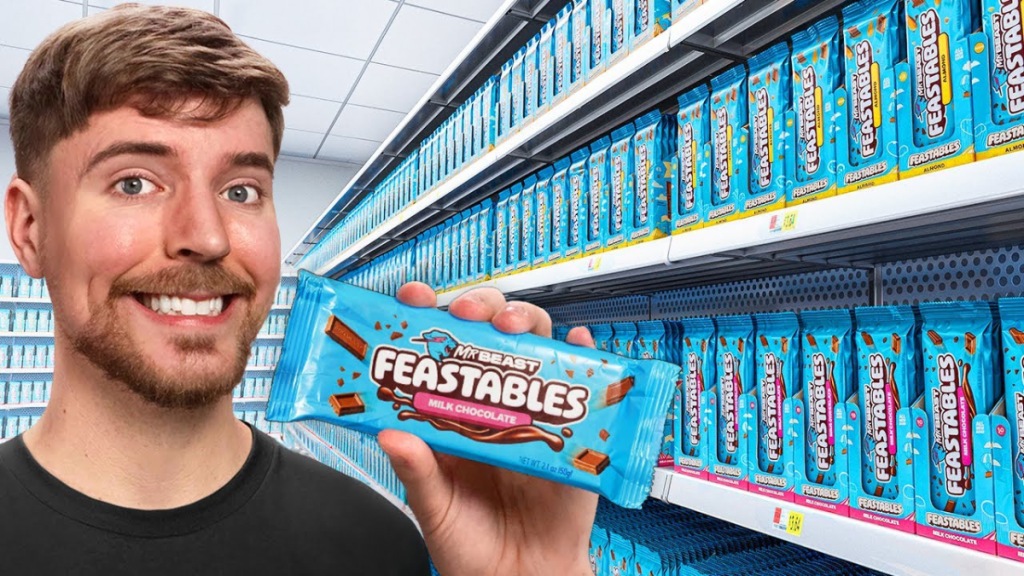At Rs 489, MrBeast’s Feastables ranks among the priciest milk chocolate bars you could indulge in—complete with an EMI option to ease the splurge. Similarly, Logan Paul’s Prime Hydration, a premium hydration drink priced at Rs 399, takes the concept of “luxury sipping” to new heights. These are not isolated cases; they highlight a growing trend in the content creation ecosystem, where creators are capitalising on their influence to launch brands of their own.
Indian creators are no exception to this global wave. Content creator and influencer Bhuvan Bam was among the first to launch his own brand, Youthiapa in 2017, with the website crashing within minutes of launch.
The brand sells a variety of merchandise, including hoodies, t-shirts, phone covers and badges. His current sales figures are not available.
Creator Himadri Patel from Dehradun, who has raked up quite a following with her Get Ready With Me (GRWM) Shorts and an open, vulnerable style of communication, says her ethnic wear virtual shop for women, DRI, is a reflection of her persona: “Storytelling is second nature to me now, and it’s helped me build an emotional connection with my customers.” On YouTube, Patel has over 1.2 million followers. The creator sells her products through Instagram, Amazon, and the brand’s official website.
Delhi girl Sonia Garg, a beauty and lifestyle YouTuber, launched her online boutique for women Wishlist just this year. “There has been a shift from fast fashion to slow fashion as the customer is becoming more conscious about their choices. These small insights allow us to add more value to this industry by manufacturing clothes that can be styled in maybe 100 ways and can still be a classic statement piece,” Garg says. The YouTuber, who has over 1.2 million followers on YouTube, has viral videos on niche topics like “unrealistic purchases from Instagram”, “trying sasta makeup from Saroniji Nagar”, among others.
Jaipur content creator Yashi Tank, who launched her brand Suyash Fashion with fellow YT creator Suraj Singh, says her brand was born from her loyal fanbase’s desire to see the duo in coordinating outfits. “That became the unique selling point of our brand — a couple coordinating outfits,” says Tank whose Yashi Tank Vlogs has over 4.3 lakh subscribers and the pair’s couple channel, Suyash Vlogs, has close to 7 million followers. The starting price for men’s shirts is Rs 600 and for women Rs 1,000.
So creators are looking to become product owners but is there enough money to be made?
The playing field
As per EY India, the Indian creator economy is valued at Rs 1,275 crore, growing at a CAGR of 25%. With over 80 million creators, India ranks among the largest creator ecosystems globally. YouTube and Instagram dominate the landscape, with YouTube being critical for longer-form, detailed content.
Lifestyle (39%), fashion (26%), and beauty (15%) dominate the content landscape in the country. No wonder the handful of products launched by creators are all in this space. But sales are slow and scaling up is becoming difficult, say creators.
The reasons are not far to seek. First, creating content and building brands are entirely different ballgames. Jashodha Madhavji, founder, Dream N Hustle Media, says, “Successful creators are adept in areas essential for content creation, such as writing, video editing, graphic design, and social media management.” But these might not be the same qualities one needs to build a business ground up.
“For instance,” says Rishabh Nahar, SVP, creator management & leadership, Only Much Louder (OML), “finance and tech creators are masters of their field and will have deep insight into their respective segments. However, they might not have the right expertise in certain business segments outside of their area like operations or manufacturing.”
Content creator Kavya Karnatac has a word of caution for new brand owners. What works in their favour is obviously a wide network, but getting into a completely new field is sure to threaten their work-life balance.
In any case, their large captive audience base is not necessarily an advantage while showcasing their products. “When an influencer promotes / markets a product or even launches their brand, they’re showcasing it to 100% of their followers. These people might not entirely be the target market for the product,” says Nahar. In other words, marketing waste every savvy entrepreneur would like to stomp out.
As a product manager with a consumer products firm puts it, “Your going out of business could come from the ‘everyone is my customer’ mentality.”
That said, it would be unwise for legacy brands to undermine the threat posed by creator-brand owners. Amiya Swarup, marketing advisory leader, EY India, says, “Established brands face a multitude of challenges in competing with creator-led brands. These challenges include maintaining authenticity, adapting to rapidly evolving consumer preferences and effectively measuring the impact of influencer marketing campaigns.” To stay competitive, they must embrace digital transformation, build brand stories, and meaningful partnerships with creators who align with their values, he adds.
